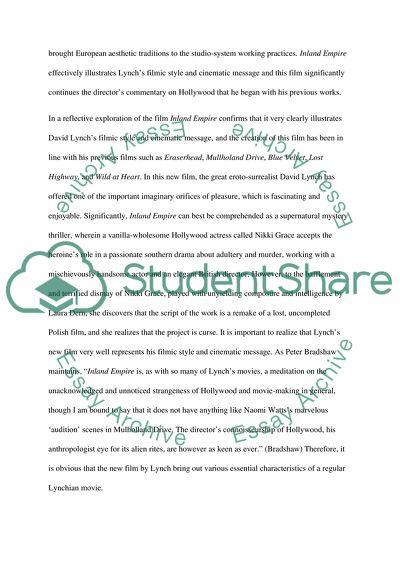Cite this document
(A Reflective Exploration of Lynchs film Inland Empire: the Film Style Research Paper, n.d.)
A Reflective Exploration of Lynchs film Inland Empire: the Film Style Research Paper. Retrieved from https://studentshare.org/visual-arts-film-studies/1731381-david-lynchs-inland-empire
A Reflective Exploration of Lynchs film Inland Empire: the Film Style Research Paper. Retrieved from https://studentshare.org/visual-arts-film-studies/1731381-david-lynchs-inland-empire
(A Reflective Exploration of Lynchs Film Inland Empire: The Film Style Research Paper)
A Reflective Exploration of Lynchs Film Inland Empire: The Film Style Research Paper. https://studentshare.org/visual-arts-film-studies/1731381-david-lynchs-inland-empire.
A Reflective Exploration of Lynchs Film Inland Empire: The Film Style Research Paper. https://studentshare.org/visual-arts-film-studies/1731381-david-lynchs-inland-empire.
“A Reflective Exploration of Lynchs Film Inland Empire: The Film Style Research Paper”, n.d. https://studentshare.org/visual-arts-film-studies/1731381-david-lynchs-inland-empire.


